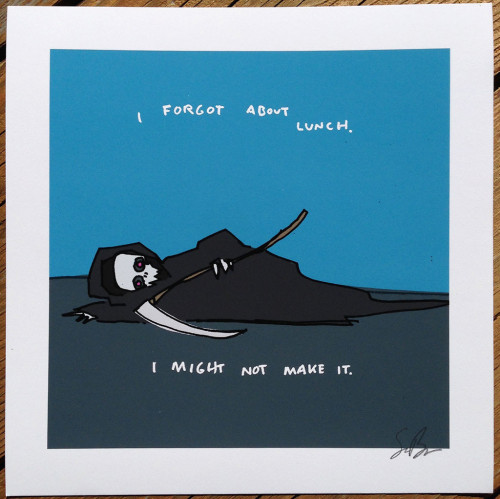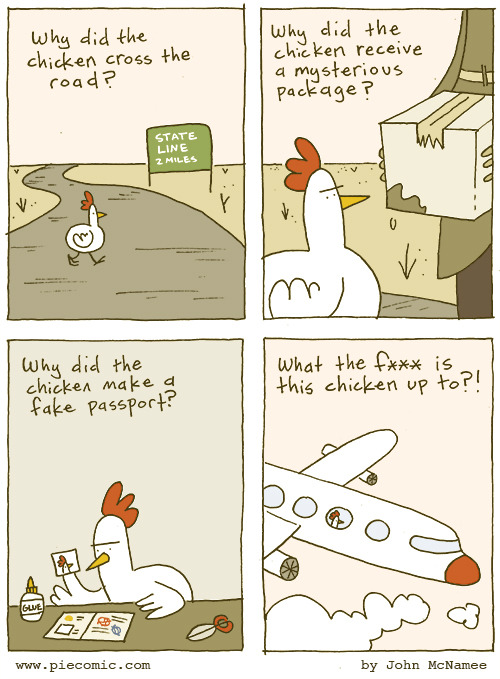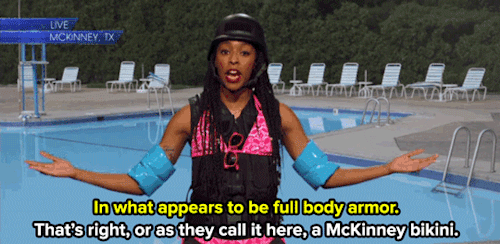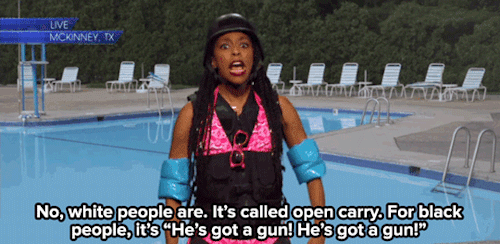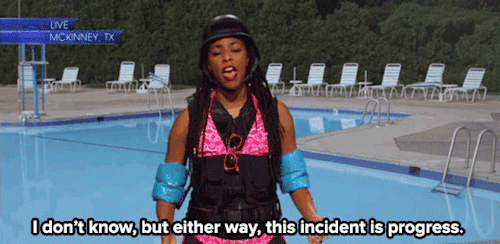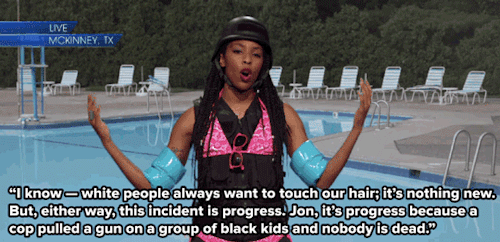
Sophianotloren
Shared posts
A Painter Who Cuts Up Figures with “Knife-Edge Stuff”

Justin Mortimer, “Cafe Au Lait” (1997) (all images courtesy the artist)
If one were to try and describe the trajectory of the British painter Justin Mortimer (b.1970) it would go something like this: after beginning his career as a social “insider” who painted the upper echelons of British society, he relaunched himself by painting dark, difficult, and disjointed works. Considering that he has been the subject of three recent solo shows — one in Singapore, another at the University of Nottingham, and one more at Parafin in London — Mortimer risks once again moving to the inside track, a prospect that makes him uncomfortable as he prefers to think of himself as an outsider.
His recent paintings construct a collaged world of inchoate images rendered in Kool-Aid colors. Mortimer understands how to make an image tangible and mysterious at the same time, and also how to use hints of eroticism to add a sense of voyeuristic appeal. His hybrid world gains its energy from the tensions between pleasure and riot, power and terror: it’s a tainted place where the unthinkable seems possible or even imminent.
Although Mortimer will tell you that his work is lightening up a bit in recent years, it is unlikely that his paintings will lose their dark, operatic quality anytime soon. Mortimer’s long-standing fascination with figures that seem detached from the contexts that surround them should continue to challenge and vitalize his art.
I recently interviewed Justin Mortimer via Skype during a visit he made to New York, and asked him about his background and his paintings.
* * *
John Seed: Justin, do I have it right that while studying at the Slade School you were a photorealist who specialized in portraits?
Justin Mortimer: I was never a photorealist — I never had that skill set — but when I was at the Slade I won a national portrait competition, which meant that I was sucked into the portrait world very quickly. I was just 21 when I got the commission to paint Harold Pinter for the National Portrait Gallery. And then, once that was on the wall, people saw it, and David Bowie and others began offering me commissions. That was really fun. In the years after art school I was able to support myself as a portrait artist. That was my job.

Justin Mortimer, “Harold Pinter” (1992), oil on canvas
JS: That must have been both a good thing and a bad thing, because it put you on a track right away.
JM: Being a portraitist wasn’t something that I wanted to do particularly, but I was able to do it. I was able to take a studio after college, and just work away. I was doing the commissions on the side and then also painting my more imaginative works — the stories that I wanted to paint about — so I was able to develop and show those works as well.
JS: How related were the two kinds of work?
JM: Technically they were certainly similar. As I was doing the portraits, I would also try to race ahead with my other work and develop things to the extent that I could, but the only way I could cope with painting a commission at the same time was to paint it in the same way that my other work was developing.
For instance, when I had to paint a very high-level commission — as when I painted the queen — the only way I could cope with all that pressure was to paint her in the same way I was actually painting in my studio, where I was having dismembered limbs, people separated from their main bodies, and color field backgrounds: disassociated figures, the isolated figure in this space. When I painted the queen this way — with her head slightly moving away from her body on this bright yellow background — it caused an uproar but in fact it was very much embedded in how I was working at that time.

Justin Mortimer, “The Queen” (1998)
JS: It’s amazing how you had these two careers: you remind me of an artist friend who supported himself very well for years painting racehorses.
JM: Yes, horses, houses, pets. There is that whole micro-world of the art world that is very lucrative, but completely ignored.
JS: Were you perhaps unusually well grounded? I think many people couldn’t have handled the double career.
JM: Maybe (laughing). Nobody has ever called me grounded before, yeah…
JS: Was there a point at which your fine art career took over?
JM: I wasn’t able to give up painting commissioned portraits until 2008. That year I did an Australian Cricketer for the Lord’s Collection, and that was my last commission. From that point onwards I have managed to be able to survive from sales of just my own work.
JS: What made your career take off, and what was the focus of the work that made it happen?
JM: There was a key moment in 2004, when I entered the competition for an art prize called “East International.” It came at a very interesting point as I was completely ignored by art galleries at that moment: I was a total outsider. Anyway, the exhibition was in Norwich and was curated by Neo Rauch and his dealer, Gerd Harry Lybke. Thousands of people entered it, and somehow I ended up not only being selected but given the top prize by Neo Rauch, my hero. That was a fantastic moment of clarity for me as a figurative painter, to suddenly be seen as relevant in an international context.
JS: It’s interesting that a German painter responded to your work. It strikes me somehow that your work is more stylistically related to contemporary German painting than to British painting.
JM: I was looking at those Leipzig painters at that time. It was the time when I was starting to use the internet and Photoshop to make collages. I was dealing with the disassociated figure in space — the outsider — the person on the periphery of the situation, which is what I seem to be exploring more and more.
I had also abandoned the very bright color field paintings I was making before that point: a lot of my colors went monochrome. I stripped out all that — the yellows and pinks — and started to re-educate myself in terms of color. So, these muted tones come in and I went very dark after that and probably spent the next six or seven years painting very dark pictures, metaphorically and physically.
Now I think I’m starting to come out of the gloom a little bit. The show that’s on at the moment in London is, I’d say, pretty sunny for me color-wise. Whereas the show that has just ended in Nottingham, which is work from the past two years, has very dark pictures: figures in woods and that type of thing.
JS: Can you take a moment and tell me how you develop your imagery?
JM: I just stroll through the internet, and all the books I’ve got in my studio — secondhand books from thrift stores, old magazines, and things like that — then I scan and pull that all together into a digital print which I pin on my studio wall as the reference for my painting.
JS: So that is how you came up with the very discordant imagery, for example, of your painting “Der Besucher”?
JM: Yes, for this picture it started with this ultimate European holiday destination — quite an old image from the 1960s or ‘70s. It’s so quintessentially European, and yet you have nurses in Ebola protective gear walking up the hill towards you. These Ebola figures came in towards the end of this painting: initially I had a sort of bent-over figure with three arms coming out of his face, a bit like my painting “Nes Ziona,” which is also in this show. I wanted to re-paint that figure. At any rate, I eventually stripped out that figure and put in the Ebola nurses.
So you have this incongruity: the Ebola people, coming to your doorstep, which I suppose is a theme I have explored a lot. There is a knock on the door, the SS taking someone out, the Serbian militiaman coming down your village street and pulling out the Muslims. It’s that kind of horror, but I’m also trying to present very coloristic, beautiful painting. The painting in this show is the most formal in terms of its elements. The paintings are quite cinematic and you know where you are in the space. In other paintings things are more difficult and more opaque.
JS: Your color strikes me as one of the strongest elements of your work. It heightens our senses and draws viewers into your paintings.
JM: I have always enjoyed color: I stripped it out and now I am coming back to it and it is a joy, I have to admit. I have to do it in a clever way if possible. I try to make the colors slightly wrong: toxic and altered. I’m not into painting a blue sky. If one of my skies is blue it is because it has been stained by smoke bombs and sodium lighting. If it’s a sunny sky I’ll put a lot more yellow into it: I’ll make it sulfurous, hence the turquoises. It’s all wrong. It’s not the bucolic view you are expecting.
JS: Let’s talk next about “Hive.”
JM: “Hive” was a very strange painting that I made to be obviously collaged. As I’m working I continue to re-collage the digital print as I go along so I’m always adding new layers. I wanted this image to be redacted, altered, scabrous, so that you can see how it has been made up. The figure came from an image of Pussy Riot, the feminist protest group in Moscow. I’m very interested in the imagery of controlling state power and religious power and I try to critique those things without being explicit.
JS: Right, you don’t want to lecture people with your paintings.
JM: Being too didactic is boring. I find that paintings only really get interesting when things are removed, taken out. I try to deliberately annoy by tripping you up, by spatially hiding the subject. You think you recognize the subject, but it collapses and the viewer has to rebuild.

Justin Mortimer, “Kid” (2015) (courtesy Parafin Gallery)
JS: What is going on in your painting “Kid”?
JM: “Kid” shows a naked boy in a kind of forest scene — perhaps a campsite — with only a slight hint of campfire, surrounded by what could be a tent or some sheets hung out to dry. This painting alludes to the outcast, to the refugees who have been coming over on boats, to all these displaced children in Calais.
At one point the image was more sexual which was slightly problematic: I kind of regret dulling that down. It was rather like Eric Fischl’s painting “Sleepwalker” which shows a boy masturbating in a kiddie pool. I have always liked Eric Fischl’s work. When the young Brits — Damien Hirst and Tracey Emin among them — were taking off in the early ‘90s, Fischl was the lifeline that kept European representational artists going. We were referencing him, and the weird “otherness” that he had.
JS: Tell me about “Pilgrim.”
JM: That is a spectacularly annoying painting based on a collage of militant feminists protesting in the Ukraine. I was trying to create ambiguity, and I remember it being troubling to paint: it’s not clear if they are in a nightclub or a riot. Clearly, there are half-dressed women, some kind of female nudes. I scrubbed it all down as I was working, throwing turps and lots of grease to give it a scabrous surface. It has a vertical choreography that keeps your eye traveling up to a second woman’s face. There is a fine line — a balance — that makes this painting work. Many of my works don’t make it all the way to the end.
JS: What are your interests outside of painting?
JM: My father was a pilot in the Royal Navy and I am an aviation geek who grew up wanting to make spaceships. I grew up interested in special effects and also made dioramas. These days I do a lot of walking and reading: I also used to sing a lot.
JS: During your visit to New York will you be seeing some art?
JM: I hope to maybe see Lisa Yuskavage’s show at David Zwirner, and maybe some works by Luc Tuymans. Of course, I will be visiting the Metropolitan Museum and looking at the work of Degas and my other heroes: French painters of the 19th century. I also like looking at outsider and folk art, made outside the filter of the art world.

Justin Mortimer in his studio
JS: Are you finding that there is a growing interest in your work and the work of other British representational painters?
JM: Yes, there is more interest now. We all rode the tide created by the former Eastern European artists who were taught in the salon system, and who then came to Western Europe. They opened people up to contemporary figuration. A lot is coming out now from younger artists. People have been crying out for something new. They want to get excited by figurative paintings that relate to their world. There is a whole generation that likes dark imagery: they like Gothic, Heavy Metal, and skateboarding.
JS: Do you feel like you are leading representation forward?
JM: Sometimes I worry that I will be seen as a reactionary conservative or paranoid in some sense if I take that stance. My peer group is much broader than that. Often I stand up for artists whose work is markedly different than mine as I want to show my respect for diverse approaches to art making.
In my own work, I am trying to open things up with overtly abstract passages in the paint. There are quite obtuse spaces and punctures in the paintings that are somehow deeply nonrepresentational. You know the chair is there, but somehow it isn’t clear. The solution for me at the moment is to push against these elements with many more odd elements that I don’t expect myself. Sometimes a figure needs to be cut in half. Doing that can take an under-performing picture into a new zone: it’s literally ‘knife-edge stuff.’ You have to be prepared to take it to that point.
Justin Mortimer: Kult continues at Parafin Gallery (Woodstock Street, London W1C 2AB) through June 27.
The Ideal Lover List

Wow.
I’m listening to 90s music (currently “Fade Into You” by Mazzy Star) and going through my livejournal while piecing together a confessional entry on threesomes. Having had an amazing one this last weekend (which you’ll hear more about later) I wanted to reflect on the experiences from my past, and what hurt me, and why. Revisiting my blog is usually an intense experience, so I expected to be taken aback by some of what I found, but this was particularly interesting: a list of what I wanted in a partner, circa 2008.
“Needs-
-accepts polyamory in my relationships
-accepts kinkiness (either is kinky or accepts me playing with others)
-queer friendly
-cat friendly
-intelligent (book smart or street smart, preferably a bit of both)
-enjoys sexuality in an open minded way
-not dependent on drugs to cope
-playful (likes to wear costumes, roleplay, be silly)
-creative/inspired
-utilizes safer sex practices/pro abortion
-emotionally self aware/deals with baggage/introspective
-financially stable
-accepting of paganism
-politically aware
-takes care of self and environment
-somewhat patient
-reliable
Wants-
-geeky
-kinky
-artistic/Burner
-always curious/critical thinker/asks “why?”
-enjoys travel
-reading > TV
-queer (or queer curious)
-enjoys various sexual expressions (3somes, gender play, exhibitionism, etc)
-not in a monotheistic religion
-good taste in music/movies”
This was written while I was in London, after years of men and women who had broken my heart into a million pieces and stomped them into dust. Thumbing through my Livejournal, I see the time I was dragged to a stranger’s house for a threesome because my date wanted to fuck him and dealing with a spanking I didn’t want because I wanted to be “cool”. I see myself reassuring myself that this boy, who wandered all over California and couldn’t commit to a phone call, much less me, really did like me, because he said so once. I see myself feeling uncomfortable with how delighted I was to have a lover who bought me dinner and surprised me with presents, because I didn’t want my affection to be bought, but I did want to be recognized.
I can see that I had multiple relationships because none of them were present for me, not really, and so with 5 of them maybe I would have a full relationship. I’ve realized that the concept of dating multiple people because one person can’t meet all your needs doesn’t mean you should compartmentalize all those needs or that it’s not ok to have higher standards for who you spend time with.
I think what I find most startling is that my tastes haven’t changed that dramatically. In fact, strangely, I think the only thing I don’t care for anymore is being a Burner, as I find other types of art/creation generally more satisfactory. And I think being queer is pretty important. But I’m really amazed that my current lovers fulfill most if not all of these things on my list. I guess I did end up deciding I’d rather be alone than with multiple people who made me feel lonely and didn’t make me a priority.
I have uneasy feelings about the trend I see, my fear of being clingy but my lovers not being willing/able to commit to me, where I need reassurance constantly because I am afraid constantly. I see in my past partners vanishing for months at a time, and then reappearing to be offended that I was dating someone else while expecting me to embrace their new lovers. They often ran away with those new lovers, proving what I thought was poly for a long time was really serial monogamy. And god, no wonder group sex freaks me out, the number of times I woke up next to my boyfriend fucking someone else or was kicked out of bed so they could cuddle…! I think I need to try to heal that scarred history, but I’m not sure entirely how.
I’ve also noticed that I used to fall in love quickly, but fell out of love about as quickly. Does that say something for the stability of my relationships now, where the feelings were slow but have been pretty steady? I’m not sure, but it’s interesting to look back and see how highly I valued feeling safe and secure within a relationship, and I’ve instead given up on the idea of a relationship providing security. (Ironically the song that started here was “Push” by Matchbox 20). I suspect not really letting myself lose control over my heart prevented me from falling too deeply in love. And here I am, falling ever deeper in love with every day, losing that white knuckle grip and letting myself be naked and raw and vulnerable and unstable. God, I worry about it being a terrible mistake, but I keep falling, because what else could I do?
I feel like it’ll all be ok. The lovers I have now satisfy so many of my needs, just just as a compilation, but individually. I feel respected as well as loved, and heard, and that’s all so important.
Haven’t I felt like that before, though?
I̧͜ ̛҉f̸̶́e͡͠e̢͝ļ͞҉ ̛p͠re̷ţ͝ţ͝y̕o͜͝h̢ ̸ş͢͟o...

I̧͜ ̛҉f̸̶́e͡͠e̢͝ļ͞҉ ̛p͠re̷ţ͝ţ͝y
̕o͜͝h̢ ̸ş͢͟o ͠͝p̨͢rę͢t̶t̵͡y͟͠
̵̀͞I̸ ̵͠f͡é̛e̕͠l̸̛ ̵͞p̴̶ŕ͜e̶tt̕ý̸ ͠a͘͜n̷d̷̀ ͏w̸i̧t̕t̢ý̨̧ ͘͠a҉ǹ̸͢d̡̕҉ ̢͠A͘A҉̸A̕͡Ą͠͠A̵U͡A͘͡͏AA̵A̧U̶͟͠U҉Ù̧͞ỨU̶̷U̴͟I̢̧͜IĮ́I͞I̴I҉I͞͡I͞EEE̛G̢͘HH҉HH̴
MoMA Is Archiving Its Exhibition Websites Before They Expire

Screenshot of the site for the 2003–04 MoMA exhibition ‘Kiki Smith: Prints, Books, and Things’ (all screenshots by the author for Hyperallergic)
Soon over 200 exhibition websites for the Museum of Modern Art (MoMA), going back to its first web experiments in 1995, will be totally archived, from their images to their code. The project, started in 2014, is a collaboration with the New York Art Resources Consortium (NYARC), which includes the Brooklyn Museum and Frick Collection and is concentrated on preserving the digital art history of museums.

Screenshot of the site for the 1995 MoMA exhibition ‘Mutant Materials’ (click to enlarge)
Seth Persons, a NYARC web archiving intern, wrote about the initiative in a post last month marking the 20th anniversary of the first MoMA website, which was made for the Mutant Materials exhibition, launched on May 25, 1995. The site was created by curator Paola Antonelli with a budget of $315 and required teaching herself code. It even preceded MoMA’s general museum site.
As Jess Joho pointed out at Kill Screen, many of these sites are already cached at the Internet Archive, which has been diligently saving the web since 1996 with its Wayback Machine and captures about a billion pages each week. The NYARC project goes deeper, though, enlisting a web archivist who examines each link, image, and cumbersome Shockwave plugin. For example, Persons cited the website for 2003’s Kiki Smith: Prints, Books, & Things as being too complicated for basic web-crawl archiving; sorting through its Flash components required weeks of hands-on work. Others are more basic, like a moody black website accented with blue text for the 1999 Jackson Pollock exhibition, while Wunderkammer: A Century of Curiosities in 2008 has a full-screen Flash experience. Now, when you go to MoMA’s exhibition archives and click through to past shows, you’ll be taken to interactive online sites that appear just as they did for users when the exhibitions were open. Just 14 are still pending in the project.

Screenshot of the site for the 2008 MoMA exhibition ‘Wunderkammer: A Century of Curiosities’

Screenshot of the site for the 1998–99 MoMA exhibition ‘Jackson Pollock’
Antonelli (still at MoMA) takes a similar approach to the acquisition of video games, wherein getting the source code in its original language is an essential part of the process. MoMA is far from the only institution concerned with internet preservation — the Library of Congress is archiving all of our tweets — yet much of social media and online content in general remains surprisingly ephemeral. Jill Lepore surmised in January for The New Yorker that the “average life of a Web page is about a hundred days,” citing BuzzFeed deleting old posts, the demise of MySpace and GeoCities, and the expiration of hosting domains. There’s a whole slew of early museum websites out there that may already be riddled with dead links and broken images, a potential void in our art history.

Screenshot of the site for the 1995 MoMA exhibition ‘Video Spaces: Eight Installations’.
aber-flyingtiger: pra-vda: Tomorrow’s Weapons What subtle...
May Contain Peanuts: grim philosophical remixes of Charles Schulz funnies
lilyredneck: dut-dut-goose: queenofferrets: juzanotherblog: n...

new bra from victoria secret! :)
A woman stands in her bedroom. She is with her attractive male lover. The air is filled with desire. They both look into each other’s eyes. The female, with a slightly bashful smile, takes off her clothes, starting with the pants first, and finally the shirt. She is wearing the bra. The man’s eyes opened wider in interest. His interest is peaked. The woman strutted closer to him, her eyes batting and her smile growing. She leans into his ear and with a breathy voice, she spoke:
“Lettuce fuck.”I graduate in three days, I pay my own bills, I have a car, and I’m reading fanfiction about a lettuce bra.
It has a little lettuce bow.
ughgodwhatever:airyairyquitecontrary:weirdvintage:A surefire way...
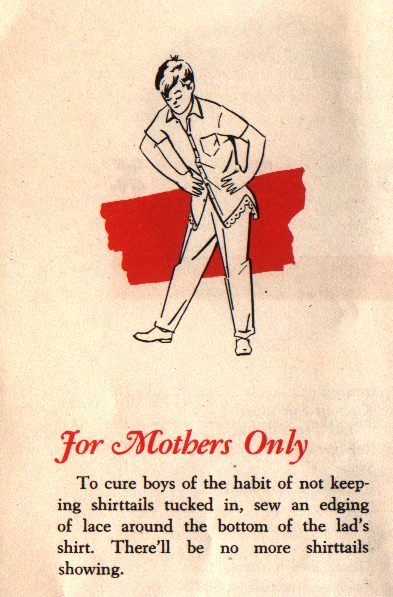
A surefire way for mothers to get their sons to tuck in their shirts, 1940s style (via Kitsch-Slapped)
The illustrated boy looks pretty darn pleased with his cute new lace edging.
I can see him now meeting his friends at the soda fountain.
‘Fellows, check out Mom’s latest effort at mind control.’ (spins)
(chorus of whistles and applause)
‘Why, Jimmy, I do believe you’ve started a fashion!’
‘Let’s go to the Woolworth and get lace edging for all our shirts!’
‘Doug can sew them on, he got his Handicraft merit badge last summer!’
‘Never regretted it.’
‘Jimmy, your mom has some internalised misogyny to figure out.’
‘Don’t I know it.’
Stealing this for soft butch looks.
Two Poems by Monica Ong
Our poetry editor, Joe Pan, has selected two poems by Monica Ong for his series that brings original poetry to the screens of Hyperallergic readers.
* * *


* * *
These two works can be found in Monica Ong’s new book Silent Anatomies (2015), selected by Joy Harjo as winner of the Kore Press First Book Award.
Monica Ong is a Kundiman Poetry Fellow and a visual designer based in Connecticut.
Readers are encouraged to submit 3–5 poems as a PDF to Joe Pan for consideration at poetry@hyperallergic.com.
Newspaper celebrates MLB's first amphibious pitcher

Nailed it.
Look, everyone is excited about Pat Venditte. But we can't be too busy to fact-check things like "the word for someone who can use both hands equally well."
Favorite headline of week. He pitches righty, lefty — and evidently, also underwater. Faces Aquaman in next outing. pic.twitter.com/efxaQxFp8Z
— Neill Woelk (@NeillWoelk) June 8, 2015
Yet another milestone that MLB has achieved. Next barrier to fall: baseball's first avian pitcher. BIRD PITCHERS NOW.
Ambidextrous, everyone. It's not just a river in Egypt. [citation needed]
Saturday Morning Breakfast Cereal - Saving Myself
"It makes him different than Luke Skywalker, but it’s not like that’s his super power. The best..."
-
Let’s all just take a moment to appreciate the fact that this is one of the key people involved with the future of the franchise.
(via amarielah)
one thing about the original trilogy as compared to the prequels is that the lightsaber duels in the OT aren’t primarily contests of skill – there’s always something much more important going on, and also no one’s particularly skilled. Obi-Wan’s an old man, Vader’s a burnt-out cyborg, and Luke’s in the best physical shape but almost completely untrained. and the fights are mainly holding actions, people buying time for someone else to get out or trying to persuade their opponent of something
in the prequels the fights are really, really showy, everybody’s really good at lightsabers, and for the most part people are trying to win. so it’s impressive, but not as interesting. And I just don’t want fight choreography, no matter how talented, as much as I want that sense of emotional investment.
(via cumaeansibyl)
s-c-i-guy: poeticdarkbeauty: who is this brilliant man His...
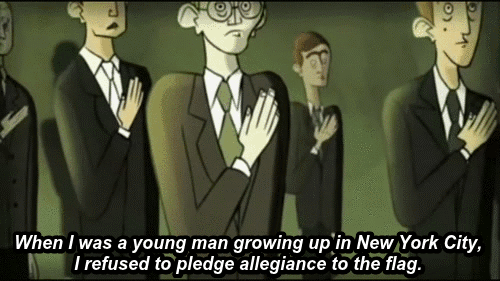
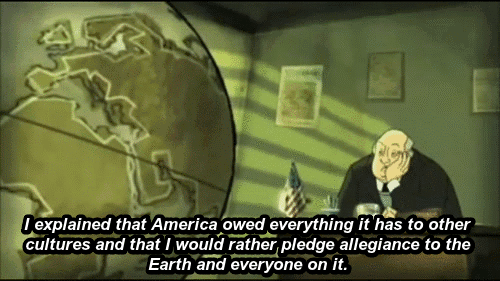
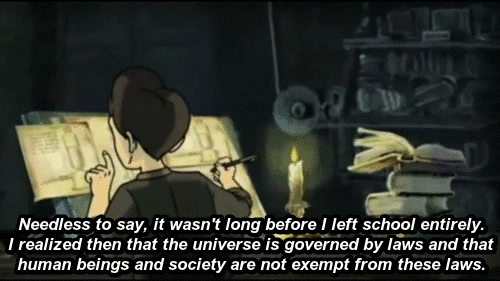


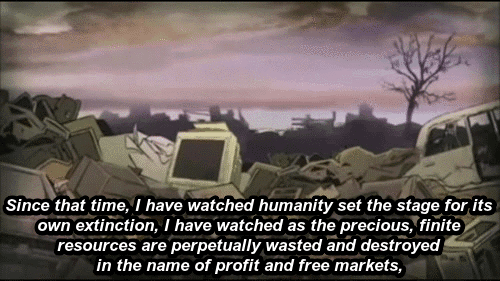


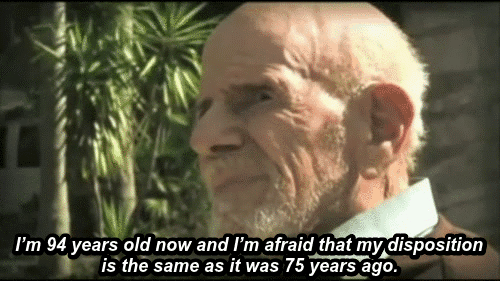
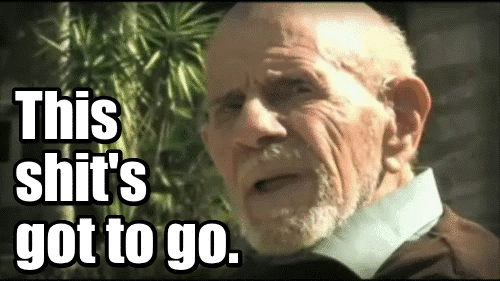
who is this brilliant man
His name is Jacque Fresco. He’s a futurist and social engineer. He lectures his views on sustainable cities, energy efficiency, natural-resource management, and the role of science in society, while being entirely self-taught.
He’s also the founder of the Venus Project, an organization that advocates a resource-based economy. The project combines Fresco’s versions of sustainable development, natural resource management, energy efficiency, and advanced automation in a global socioeconomic system based on social cooperation and scientific methodology.
As you can tell he’s a pretty badass dude.
Review: Cordless Magic Wand Courtesy of Maxiwand

“It’s just like the original Hitachi Magic Wand, but more powerful and also cordless!” the glowing reviews exclaimed. “You can have all of the power and none of the need to be by a socket!”
I’ll admit, I was suspicious. Many wand style vibrators have made such a claim and failed me in my moment of need. I’ve tried the LELO Smart Wand, the rechargeable Bodywand, the Wand Essentials version… I’ve given them all a shot, often more than one, but at the end of the day I come back to my corded, old standard Hitachi. I’ve felt them overheat against my clit, the motor rumbling in protest. I’ve had them spark, almost set my flat on fire, and die mid-wank. With the original design becoming harder and harder to find, it was time to find a substitute, the next generation if you will.
Luckily for me, Maxiwand sent me an email as if reading my mind. “Want to review a Magic Wand? We’ve run out of the originals, but could send you a cordless one”, they said, and I jumped at the chance. I don’t go to a lot of sex parties anymore, but I do travel, and being able to jerk off without worrying about which side of the bed has the closest outlet would be a luxury.
 Not only does this beauty have 4 speeds instead of the 2 we had to work with before (high, and holy fuck my clit is numb), they go a bit lower and a little bit higher. Redhead Bedhead broke it down on her review:
Not only does this beauty have 4 speeds instead of the 2 we had to work with before (high, and holy fuck my clit is numb), they go a bit lower and a little bit higher. Redhead Bedhead broke it down on her review:
Original Magic Wand: 1- 5000rpms ; 2- 6000rpms – Remember it had two speeds.
Rechargeable Magic Wand: 1- 2,700rpms; 2- 3,800rpms; 3- 5,400rpms; 4- 6,300rpms
That’s a nice change of pace, especially if you’re like me and were worried that you were going to have to make do with a jackhammer soon enough. There’s a little more flexibility, which is what I was hoping for when I originally hooked my original Hitachi into one of those dial doodads. Having this all in one, and without a cord to boot, is a serious plus. There’s also the option of having pulsing patterns, but I don’t really care for those. I was glad those choices were controlled by a different button and therefore could be entirely ignored.
 There’s a silicone head, which, thank FUCK! This means you can actually sterilize the head, which you couldn’t before. Obviously, don’t dunk the whole thing underwater or boil it, but you can bleach the silicone bit and then wipe that off to make it safe to use between partners or use toy cleaner. Simple.
There’s a silicone head, which, thank FUCK! This means you can actually sterilize the head, which you couldn’t before. Obviously, don’t dunk the whole thing underwater or boil it, but you can bleach the silicone bit and then wipe that off to make it safe to use between partners or use toy cleaner. Simple.
That said, my one complaint about this vibrator is the buttons. I liked the simplicity of the switch on the old model- the press buttons on this one are easy to confuse when you’re holding it to your junk. There were a couple of times I pressed the wrong button and found myself having to start over thanks to the pulsations. I’m not super keen on the fact it shuts itself off after 20 minutes, either, but considering the issues I’ve had with overheating, and the fact this gets me off faster than the original, I can work with its shorter “staying power”. You can also totally turn it back on and not let it rest, but I can imagine that being frustrating for some folks.
All in all, I found this to be completely comparable to the original Magic Wand for power, with additional perks like cordlessness and two more speeds. Do I recommend it? Absolutely! To be completely confident in my recommendation, I’d probably want to try it out on a couple more sets of junk, so, in the name of science, I’ll get back to you on that front. ![]() But at least on my genitals, the cordless Magic Wand is well worth the money and stands up to its reputation.
But at least on my genitals, the cordless Magic Wand is well worth the money and stands up to its reputation.
US and Canada readers, you can pick up the original Magic Wand if you want to stick to the classics, or try out the rechargeable cordless one over at Maxiwand!
OR if you’re in the UK, check out UK Wand for an high-powered alternative that works in your high powered outlets (wish I had one of these when I lived out there, I blew out way too many outlets!) And if you’re in Europe, the Euro Wand Massager is an alternative to the Hitachi magic wand and has 4 sites in various European languages:
Thank you Maxiwand for offering me this product in exchange for an honest and fair review.
(untitled)
It’s really disappointing on the extremely rare occasions when there’s a chick who’s hot, and she’s maybe even into me… but she’s also super into religion. Or she smokes cigarettes non-stop. Or she insists that other women shouldn’t be allowed to choose what they do with their own bodies (i.e. “shaving your body hair and wearing lipstick is capitulating to the patriarchy and if you actually CARED you would change everything about yourself to suit my tastes instead!”) Or she buys into that whole trendy-in-the-bay deal (though certainly not exclusive to here) of “saving the world” through self-deprivation (which, near as I have ever been able to figure out the dogmatic religiosity of veganism, that’s what it keeps coming out as.)
Like, I really don’t expect to have every single thing in common with anyone in the world. I really don’t. And if I don’t have exactly the same tastes in music or books or movies or food or recreation as someone, no big deal! But in the same way that I wouldn’t try to date a gal who thinks that war is wonderful and we should be violently invading more countries; in the same way that I wouldn’t try to date a gal who thinks that trans* women aren’t really women, and fights to exclude some women from women’s spaces; and I wouldn’t expect to be criticized heavily for those choices — I wouldn’t think that it would be considered so gauche of me to have a few minimal standards in other areas to ensure that I’m not trying to spend time with someone who is okay with causing harm to me or to themselves.
And yet daring to say some of those things out loud — especially the one about avoiding relationships with those who have the luxury of circumstances to afford promoting self-deprivation as a positive force for good in the world — gets me dirty looks at a minimum, and often quite a rant from others about “tolerance” and “acceptance” and being “nicer” to people.
Filed under: General
Meet Cinnamon, the cute character who is viciously bullied every day in Japan
All the white puppy wanted to do was share his French toast. Cinnamon, a cute character created by the same Japanese company responsible for Hello Kitty, posted tweets like this every day. Normally, these morning messages would be met by followers gushing about how cute the attached picture was, or fans wishing him a “good morning.”
Cinnamon’s online life in recent times, however, had become tense. “You look like a piece of soap, get diarrhea,” one user wrote in response. Another Tweet -- since deleted, but preserved by other users -- said “Please kill yourself with that knife.” For the last few weeks, the dog character had faced abuse like this daily, every innocuously cute post met with a sea of “shut ups” and “die.”
Many imagine Japan as a land stuffed with adorable characters. Hello Kitty has become a global ambassador of all things “kawaii,” while recently John Oliver featured a segment on his show devoted to the country’s use of mascots for -- nearly everything. Yet the situation isn’t always so cuddly. Cinnamon’s recent Twitter interactions marked the first significant time a huggable character has been the victim of cyberbullying in Japan. And it hasn’t just been a few isolated comments, but a steady stream of nastiness from hundreds of Twitter users. It has inspired reactions from well-known pop singers and warranted coverage in multiple national newspapers and on TV. The Cinnamon saga struck a nerve with people in a country where bullying -- both digital and physical -- is an issue on the rise.
The critter at the center of it all, though, is neither new or obscure. Sanrio, Japan’s premier producers of cute characters (think Hello Kitty and My Melody) created Cinnamon in 2001 as the flagship character of their “Cinnamoroll” series. He’s featured in cartoons and comics, and became one of the company’s most popular entities. Walk by any branch of Tokyo Tomin Bank, and chances are you’ll see a stuffed Cinnamon in the window. In this year’s annual Sanrio character ranking, early polls (these are very serious affairs) projected Cinnamon to finish third overall, ahead of Hello Kitty.
Yet glancing at the replies to Cinnamon’s daily tweets reveals a lot of people wishing ill on the character and his various friends. There’s no definitive starting point for the bullying -- various mean-spirited comments have long slipped into Cinnamon’s stream, but were the sort of isolated trolling every high-level Twitter account expects -- but sites such as Naver Matome report it really got going over the last three months, escalating drastically near the end of April. A drawing of Cinnamon standing in front of some colorful flowers, for instance, prompted digital shouts of “shut the hell up, I just ate lunch!” and “you look like you smell bad.” A tweet featuring the character holding a pile of the dessert he’s named after had commenters wondering why he was holding a plate of pink poop (a theme riffed on in similar Tweets). The insults keep going, and even an act as simple as showing off a new umbrella resulted in someone telling him to “suck my dick.”
Nearly every Sanrio creation has a Twitter account, where new drawings get uploaded daily, but only Cinnamon has attracted cyberbullying. Users even noticed this discrepancy -- while relatively new characters such as Gudetama (a lazy anthropomorphic egg) and Kirimi-chan (a hunk of fish meat) received warm messages, a Cinnamon tweet from the same day drew comparisons to the movie The Human Centipede. Users have tried to spam other Sanrio character’s feeds in the past with mean-spirited messages, but nothing came out of it. Yet by early May, every new tweet by Cinnamon was met by a mix of people trying to be clever with their insults, generally nonsensical threats and those relying on sub-playground approaches (“die,” “shut up,” “you’re ugly,” “go away”).
Why Cinnamon? Many Japanese Twitter users have been speculating about it (Naver Matome gathered many of their thoughts online), and the consensus seems to be that it’s all for the likes. Early jokes at the expense of Cinnamon -- such as an image of Cinnamon being targeted by a fighter jet -- raked in favorites and retweets. Tweets poking fun at the dog-like creature, along with parody accounts posing as official, did well, inspiring more users to try to replicate that success. These early examples, though, were far more good-spirited than what came after. The tweets, in an effort to stand out, got meaner and meaner, eventually dissolving into what would constitute bullying against a human.
Whatever the reason, the abuse hurled Cinnamon’s way got worse as May dragged on. Fans of the character first offered words of encouragement to Cinnamon (“don’t take all this too seriously, Cinnamon!”) and eventually started pushing back against the bullies, talking to them directly. Sanrio addressed the issue head on, by posting a cartoon where Cinnamon’s friend Chiffon addressed Twitter in place of Cinnamon. “I’m here to protect Cinnamon, and you should protect your friends too!,” is how Anime News Network translated it.
The same day, Sanrio blocked over 200 accounts that had been harassing the character. This only enraged the anti-Cinnamon crowd, and resulted in one popular user claiming to receive a message from Sanrio telling him to come out to their offices, which he documented on Twitter. He faked it -- Sanrio never contacted him -- for the likes. The abuse kept coming.
But it also resulted in the story getting more widespread media attention. Dozens of Japanese web sites wrote about it, followed by newspapers such as the Chunichi Shimbun and the Tokyo Shimbun covering it as well. Government-backed channel NHK did a report on it, and soon celebrities were coming out to support Cinnamon. TV personality Arie Mizusawa expressed her happiness at Sanrio taking action, while former members of the pop group BiS took to Twitter to back the character. An online news video summed it all up neatly.
Cinnamon might be a fictional character, but what the floppy-eared puppy endured is a very real issue in Japan today. Bullying has long been a problem in Japanese schools and workplaces, attracting plenty of attention from the media. Earlier this year, The Japan Times reported that the number of cyberbullying cases in the country was on the rise (as was all bullying). It’s an issue that has affected thousands in Japan, and which has been a topic of discussion for quite some time. There have even been songs written about it -- pop-gone-death-metal outfit Babymetal wrote a song with a title that translates to “No More Bullying.” Cinnamon isn’t a real person, but he’s famous enough (and the situation strange enough) to act as a microscope on cyberbullying. It revealed how many people are ready to pile on somebody for praise, and how many others hate seeing someone being picked on.
Cinnamon’s online life hasn’t completely returned to normal. Mean comments still appear, and larger flare ups still happen, such as when he drew a picture that some simply described as “bad,” others “garbage” and still more “like sperm.” Fans, though, have also come out in higher numbers to counteract the negativity with simple messages of “good morning Cinnamon!” and “so cute!” while also shouting down the mean users. Cinnamon might never fully be able to draw or enjoy his breakfast in peace ever again, but at least he’ll have plenty of people on his side.
CONSTRVCT - DesignerPioneering digital fashion label has updated...
Sophianotloren@Rosalind this seemed relevant to your interests :)


CONSTRVCT - Designer
Pioneering digital fashion label has updated their designer feature to customize the clothing to your preferences:
Are these British expressions British?
A: Ooh, this cake has real taste-itude.People are saying it, people are understanding it. It's made out of morphemes and it's not a phrase. It's a word. It might not be a word that's going anywhere, but it's a word. And I'd go so far as to say it's an English word, since it's made of English word-parts according to English rules, pronounced with English sounds, and understood by English speakers.
B: Ha! Taste-itude, is that even a word?
Lynne: It is now.
Recently someone on Twitter took me to task for giving BrE versus AmE uses of tortilla as my Difference of the Day, protesting that tortilla isn't even an English word; that the difference is between European and Mexican Spanish, not British and American English. My response was: yes, the word(s) came from those Spanishes, but you can find tortilla in English dictionaries and how English speakers use tortilla can differ from how Spanish speakers use it. So, is tortilla an English word? It is now.
This isn't to say that any non-English word in an English sentence automatically becomes English. If I wrote "My favo(u)rite Swedish institution is fika, the social coffee break", a lexicographer would look at it and say: we don't need to put fika in our English dictionary because (a) it's been marked as foreign (with italics), (b) the writer felt the need to define it, indicating that it's unfamiliar in English, and (c) it describes something in another non-English-speaking culture. When the glorious time comes that English-speaking cultures embrace fika, we'll say things like "I'm just going to fika with Jo. Care to join us?" and the lexicographers will put it in English dictionaries.
- the expression has become less specific to America, and therefore British people say it as well as American people because it is now 'general English'.
- the expression used to be American, but now British people say it and Americans don't. Thus, it is not 'general English', but 'British English'.
This week, we can analy{s/z}e whether the same happens when Americans talk about Britishisms. (Of course, what's different is that Americans are likely say "That's so cute! I'm going to start saying that!" rather than "Those people are ruining our language with these silly expressions!")
Here's a list of "British expressions" that has been going (a)round the web:
Like many things on the interwebs, there's no source-citing here. Judging from the 'we say' at zed, it's by an American who knows a bit about Britain. Some of the translations are fairly poor and some of it is fairly dated (chap illustrates both these charges).
What struck me about the list was that I was pretty sure that some of these were American English (originally, if not currently). And at least one I knew to be an Australianism. So, since I have finished my external-examining (it's a British academic thing, and it's a lot of work), I am celebrating by looking into all the items on the list. I won't bother to say "yes, that's originally British" about the majority that are. (Some of them have been discussed already on this blog; you can use the search box on the right to look for them.) But let's think about the ones that aren't.
(the) bee's knees This is 1920s American slang, and as far as I can tell it has never been more popular in the UK than the US. Yes, some British people say it, but Americans are saying it more. And whoever is saying it, they're probably elderly or affecting a vintage style.
know your onions Another old US phrase (the first two OED citations - 1908 and 1922 - are American; first British one comes in 1958). It is definitely used more in the UK now than in the US. World Wide Words has a nice post on it.
wicked to mean 'good, cool' is something that may have been re-invented in the UK (negative words have a way of being made positive in slangs), but it was certainly something I said in the 1980s in the US, earlier than it was being used in UK. OED lists it as 'orig. U.S.' and cites F. Scott Fitzgerald for its first recorded use:
(a) tad To quote the OED: "colloq. (orig. and chiefly N. Amer.)." The 'chiefly' there is out-of-date; it's well used in BrE now (new ways of achieving understatement are always helpful in BrE). But it's never gone out of use in AmE, so its presence on the list is a puzzle.1920 F. S. Fitzgerald This Side of Paradise i. iii. 119 ‘Tell 'em to play “Admiration”!’ shouted Sloane... ‘Phoebe and I are going to shake a wicked calf.’
(a) shambles To mean 'a scene of disorder or devastation', the OED says 'orig. U.S.' And yet it is in the list twice. (It is used more in the UK, but it's not unused in the US.)
skive Now, I've written about this word before (great word--didn't know it before coming to the UK), but in doing so I failed to mention that it started out in America, seemingly derived from French esquiver. Again, from the OED:
1. intr. U.S. College slang. At the University of Notre Dame: to leave the college campus without permission. Also in extended use with reference to other disciplinary matters. Freq. with away, out, etc. Cf. skiver n.3 1. Now disused.
2. trans. orig. U.S. College slang. To avoid (work or a duty) by leaving or being absent; (now) esp. to play truant from (school). Now chiefly Brit. colloq.
uni Here's the Australianism. BrE speakers above a certain age will tell you it came into Britain through the soap opera Neighbours in the 1980s. BrE speakers of university age now probably have no idea it came from Australia. It is used a lot in the UK.
So, about 12% of the lists are expressions used by the British, but not invented by the British. So, they're British expressions in the sense that British people say them.
Some are not invented by the British and not exclusively said by the British. Seems a bit odd to call those ones British expressions.
These not-so-British expressions on the list probably indicate that the writer fell into an old trap: if you don't know an expression and then you hear someone with a different accent say it, it's easy to conclude that the expression is a regionalism that is particular to people with that accent. I fall into the trap too, like when I assumed station stop was a Britishism because I had only heard it in Britain (but then, I take trains more in Britain). It's our duty as people who care about language to try to resist those easy conclusions, because we have to admit that our individual experience of vocabulary is an imperfect, biased, and ahistorical view of the language.
The other problem with the phrase British expressions (and one that plagues this blog) is what's "British enough" to be British. For something to be called a British expression is it enough that it is used in Britain? Is a Yorkshireism or a bit of slang from Multicultural London English a British expression? Or, for an expression to be British does it have to be used across the whole country (or at least the whole island)?
So, what do you think: should we call the originally-not-British items on this list British expressions? The next time a British person says Can I get a latte? and someone else says "That's not British!" should we say "It is now!"
Postscript: I just can't resist mentioning what I've learn{ed/t} about a British-British item on the list:
arse-over-tit is British through and through, but it was originally arse-over-tip. Its current form lends support to my belief that British English will find any excuse to say tit as often as possible.
micdotcom:Stunning Australian street art shows the world the...
SophianotlorenI have met this person and they are nothing but amazeballs.





Stunning Australian street art shows the world the true face of LGBT people
Australian street artist Astrotwitch launched “Queer the Streets“ last year based on the idea that, as they wrote on Tumblr, all the “queer community needs is simply for more people to know that they exist.” Their works are incredible — and every one has the potential to create a change.
Meet Cinnamon, the cute character who is viciously bullied every day in Japan
SophianotlorenSad. :(
Thinking about younew batch of mini prints. From all new...
Lunch with Death(if you’ve been enjoying the mini prints and...
I’ve seen this image before but this is the best caption.

I’ve seen this image before but this is the best caption.
This 45-Minute Blade Runner Cut Is Made Of Footage Not In The Final Film

There are already multiple official versions of Ridley Scott’s classic film Blade Runner, but YouTuber Uchuu Daisakusen managed to make a completely different cut using just the B-roll from the film and takes that ended up on the cutting room floor. Check out their 45-minute version of Rick Deckard’s journey.











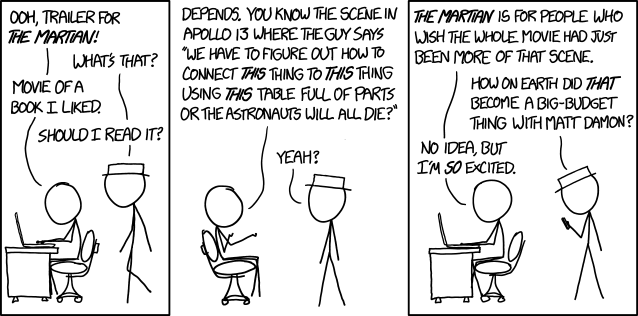



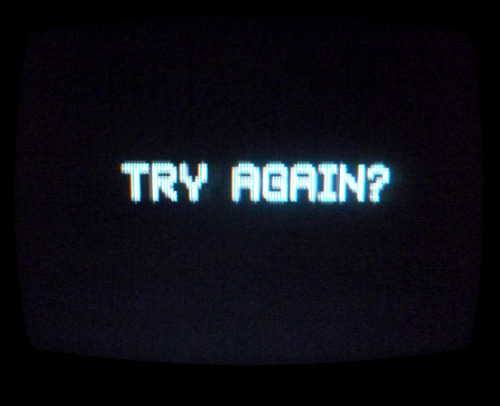
 “You look like a piece of soap, get diarrhea.”
“You look like a piece of soap, get diarrhea.” 

